
Few people can say they’ve met almost everyone who’s walked through WCM’s doors, but Patricia Kuharic, our Sr. Medical Photographer, has been the woman behind the camera documenting staff, events, medical breakthroughs, and more for almost 30 years. We sat down with Pat and learned about the amazing things she’s captured in her career, and her fascinating journey to WCM.
I'm a photographer, the only full-time photographer, here at Cornell. I work with every department in the college, and I’ll upload images to our server for the ITS website and other sites. I do all the doctors’ portraits for our websites, residency composites… I take pictures of practically every person who comes in here!
I'm going to date myself, but I've been a photographer for quite a few years now. My first professional photography job was way back in 1982, and I worked for Carnegie Mellon because I'm from Pittsburgh. I did an internship in medical photography and I ended up working for Lenox Hill here. That was my first job working for Pathology because, back then, pathologists couldn't take their own pictures. During my internship, it was interesting because the guy that was in charge of the photography internship was a world-renowned photographer as far as it came to microscopic slides. So, he taught me stuff and that's how I got a job here.
Oh, I've moved around the East Side for a while! Everybody says I worked at every hospital on the East Side because I worked at HSS, I did Lenox Hill, and I did Memorial, but I like Cornell because I had a lot of different things to do. I've been here for… let's see, this is tough. I started working here in 1994.
There were five photographers here at one time. Once digital photography took over, we weren't doing a lot of the medical stuff because the doctors basically just got a resident to do it. It's probably been maybe a little over 10 to 15 years now that I've been the only [photographer] here.
Oh yes, there is! I took a photo of one of the doctors… I'm not sure whether he's still here. But he was one of the surgeons in the operating room. The photo was used for a brochure here and I used a gel over my lights. It was really pretty because there was a light on him and then there was a green light in the back. It was also cool to take CT scans and then put a gel over your light and you’d have a blue light in the back, so it looks really fancy.

Photo credit: Patricia Kuharic
I love my photo micrographs because they're really cool, and I used to think that I'd like to make a scarf out of one. Unfortunately, if you're looking under the microscope, the worst things get the prettiest colors. You could have like a bug with pretty colors around your neck and nobody knows what it is! Actually, right now I'm working on the 6th edition of a book for one of the pathologists here, and he gets me to color correct and fix all the pictures. The last edition became a best seller, so I'm like, “Good, I did a best seller!”, but it's for breast pathology. Who's going to look at this, right?
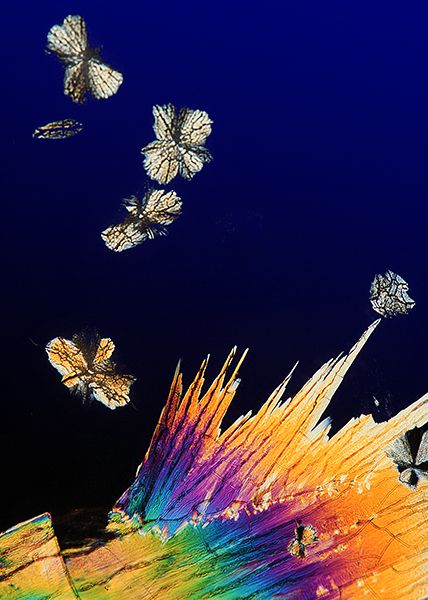
Micrograph of Vitamin C. (Photo credit: Patricia Kuharic)
Yeah, Dr. Anne Moore actually emailed me and said, “Oh, your work was so good!” because that's what she does.
I am a registered biological photographer, by the way. It's this huge test you have to take – it's almost like defending a thesis. [The BioCommunications Association] gives you, like, 20 projects you have to do. Then, you send a portfolio across the country so your peers grade you. If you pass that, you do a written test, then you go to the national convention and you have to decide on what you're going to talk about and defend all this stuff. There's, like, five people around the table asking you questions about photography. Actually, I did this a long time ago and the subject that I picked was Photoshop. This is way back when Photoshop was Photoshop 1.0, so I showed them like how to edit backgrounds and all that kind of stuff.
Well, I had to reinvent myself a few times as a photographer, which may sound weird. When I first started, I did research and medical stuff and it had to be really exact. After digital photography took over, all of a sudden, there was hardly any medical stuff anymore and I started doing more portraiture because that's what people wanted. I did portraits and was really precise with what I was doing, but the pictures weren’t interesting because you have to do different angles. So, I had to learn to be a more journalistic-type photographer than a medical one.
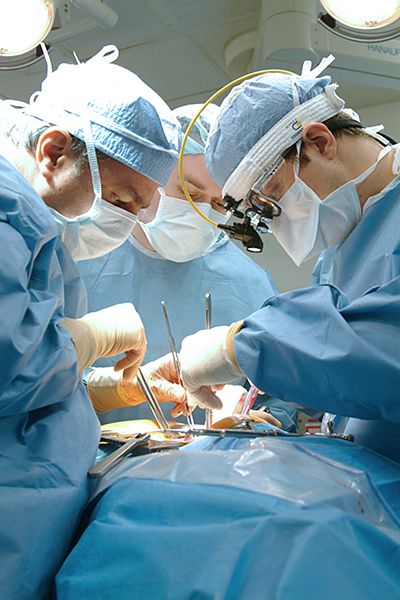
Doctors performing surgery in an operating room. (Photo credit: Patricia Kuharic)
I’ll get on a ladder, I’ll get low to the ground… that's why I bought my drone a couple of years ago. Using the drone – that's an angle that you never see, so it's sort of exciting to do something different. I actually took the FAA test and became a certified drone pilot.
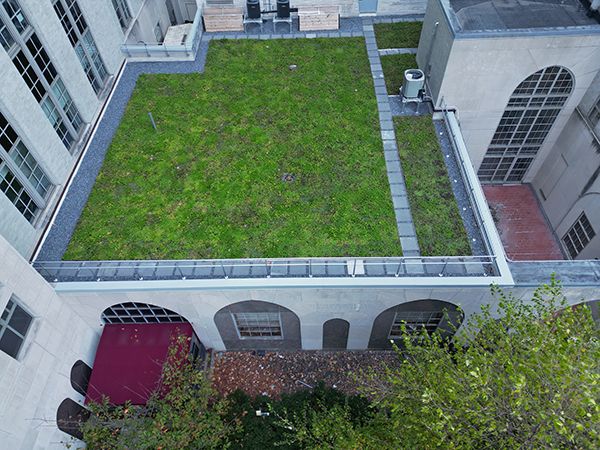
Drone POV over green space at Weill Cornell Medicine. (Photo credit: Patricia Kuharic)
I have! I mean, I used to be an athletic trainer so I had a trainer certification. I was a paramedic for six years and—
Well, that's an interesting story! I had a BA in Art and Phys Ed, but I didn't like to teach. I thought I'd be better off in a college and wanted to be an athletic trainer. So, I took the National Athletic Trainer certification and got a master’s in Sports Medicine. But this is when they wouldn't hire a woman as an athletic trainer. I was one of the first people after Title IX to apply. I had some of the absolute worst interviews ever because I was the token woman. That's the only reason they interviewed me. They had no intention of giving me a job.
When I was getting my master’s degree at Slippery Rock, I was asked to be an athletic trainer for the US Figure Skating team, so I went out to California and did that for their training center, but I missed my chance because you know what happened in 1980? We boycotted the Olympics because they were in Moscow! And that was my only chance to go.
I thought, “You know, they won't hire me as an athletic trainer, so I'll try to sneak in through another door.” So, I joined an ambulance service as a volunteer and worked with them for a while. Then I thought, “You know, I'll be an EMT!” I was an EMT and then took my paramedics certification because I thought if you’re a paramedic, they'll hire you as a trainer. Well, that didn't work either, but I was a paramedic for six years. The best part is that I used to go on transfers because I lived in a small town outside of Pittsburgh. Sometimes, people were so sick they had to be transferred to a big hospital in the city. I went on a transfer to one of these hospitals in Pittsburgh and as I was pushing the gurney through the hospital, I looked and there was this door that said “Medical Art and Photography.” And I'm thinking, “Wow, I could do that!” We got the patient situated and I told the driver to go back to the ambulance. I said, “I have to stop in here to see what this is about.” And they actually needed an intern, so there you go!
Yes, the door opened and there it was! All of a sudden, after I was trying to be a trainer all this time, I looked at this and I thought, “You know what? I'm perfect for this!” Because it was medical stuff and I knew it from being a paramedic.
I just like to do different things. I don't have a real favorite part. I’m working on another book with a physician now, and I got to use these macro lenses to take photos of small instruments, so that was fun. When I do portraits, it’s interesting because people all look different and have different ideas about photo editing. Sometimes, I do conferences. When I was in HSS, I got tired of taking pictures of X-rays of bones and people with casts. I like to switch it up and be a little more creative. It's just nice to do a variety of things because you never know who's going to call you and make an appointment for something weird.
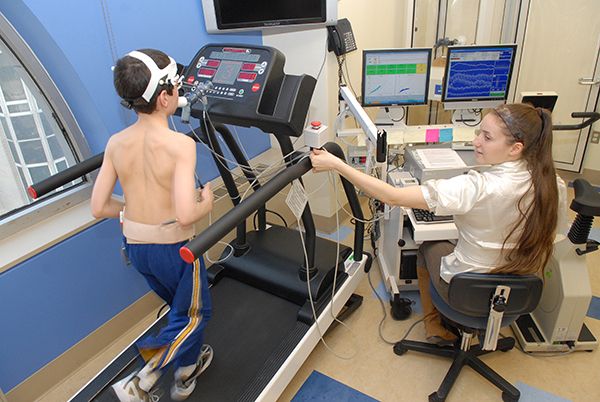
Young patient receiving rehabilitation treatment at Weill Cornell Medicine. (Photo credit: Patricia Kuharic)
I played tennis in college, so I like Serena Williams. I have her GOAT shirt, of course. I went to the Open and saw her play; I actually went to the practice courts early so I could get a seat because then you can get better pictures. Billie Jean King, she was my idol for years because she was winning everything when I played on the tennis team in high school and college.
For photography, I always liked Margaret Bourke-White. I have a copy of the picture of her sitting on one of the gargoyles, taking pictures of New York from the Chrysler building. It's my favorite building, and I think, “Yeah, I would do that.” That's a stupid thing to do. You don't have anything you know if you fall off… you're a dead duck!
[laughs] Yeah! And I like Georgia O'Keeffe as a painter because I love plants. I've been collecting rare plants.
The big thing I love is taking pictures of snow scenes in Central Park. Unfortunately, this year hasn’t been good for it, but I've been taking pictures there for 20 years now. I wanted to do a book on them, actually.
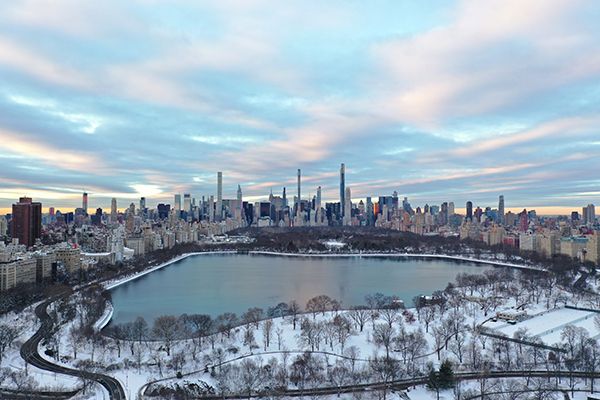
A snowy view of Central Park. (Photo credit: Patricia Kuharic)
Of course, since I'm in New York, I usually go to musicals and plays. I took a class at The New York Botanical Garden because I want to learn more about my plant stuff. I was a runner, but I have this chronic disease where I can't run anymore, so 12 years ago I got certified as a yoga teacher. I teach Vinyasa flow; I haven't taught since 2020, but before that I was teaching after work.
One of the knowledge articles I’ve written up is Yoga for IT People. I think it works really well because you do some stuff for your eyes because you stare at the computer all the time. And there's stuff you could do in your seat.
You can find Patricia’s published work in Rosen’s Breast Pathology and Rosen's Diagnosis of Breast Pathology by Needle Core Biopsy. Here are some other samples of her work:
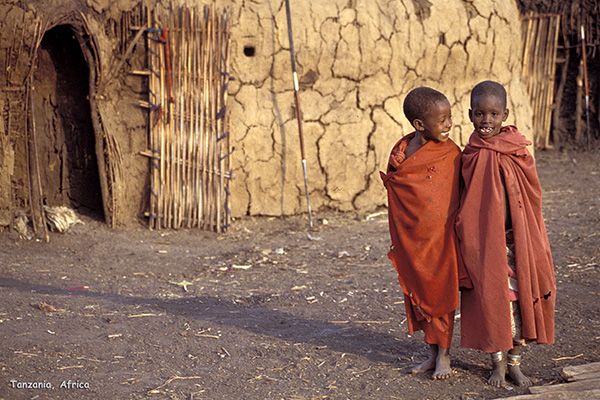
Two children laughing in Tanzania. (Photo credit: Patricia Kuharic)

A sunrise over the East River. (Photo credit: Patricia Kuharic)
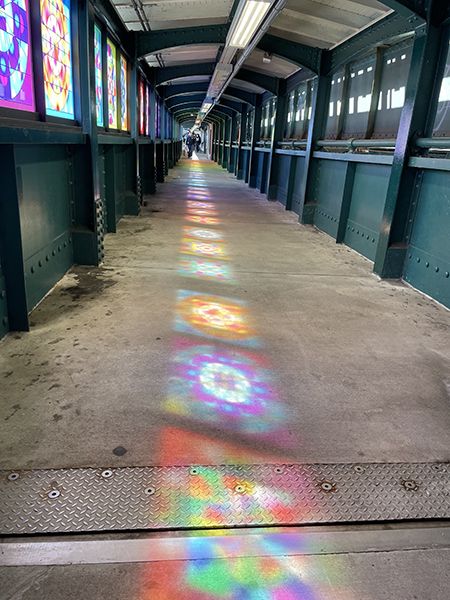
A colorful subway platform. (Photo credit: Patricia Kuharic)
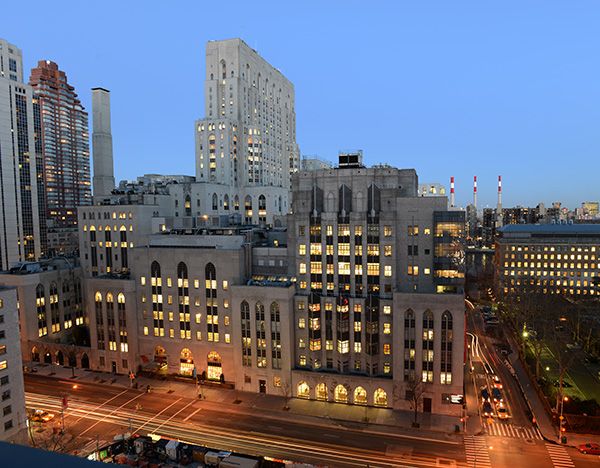
The Weill Cornell Medicine main campus. (Photo credit: Patricia Kuharic)